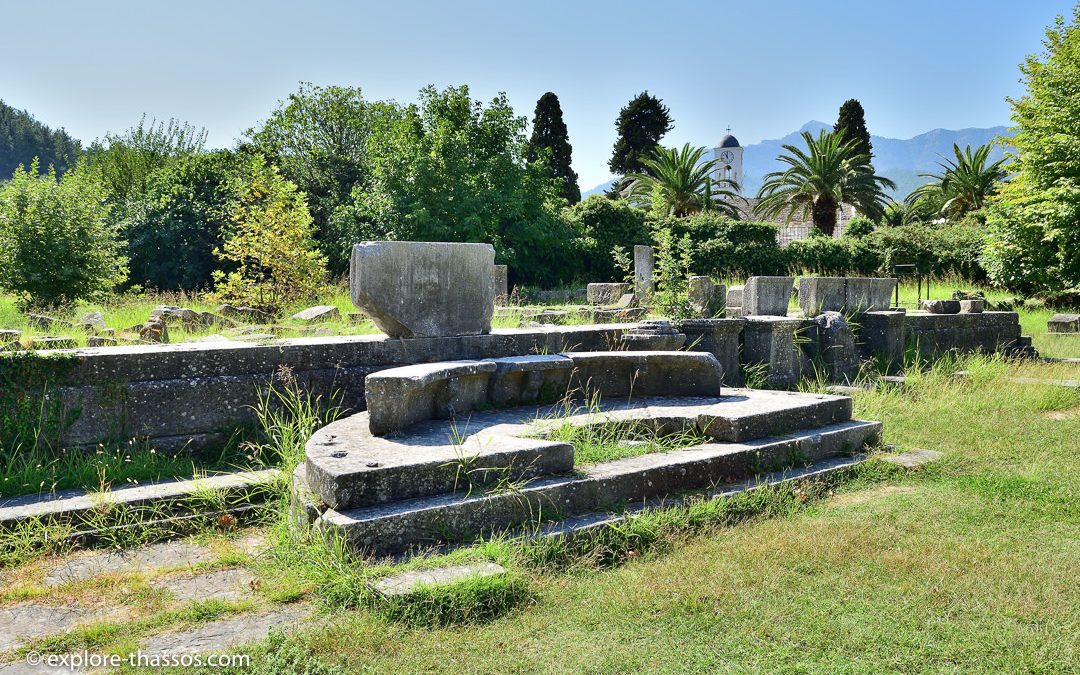The ruins of the Ancient Agora of Thassos are located above the closed port. The Museum of Thassos is built next to them.
The Agora is a plaza measuring approximately 80×100 meters, and is surrounded on three sides by stoas and on the fourth one by a stoa and buildings. In the northwestern part of the shrine stands the mosque of “Zeus Agoraios Thassian”, as the inscription inform us, with a circular courtyard of marble columns.
The circular altar of the Thassian Olympic winner Theagenes is quite important, onto which there existed his bronze statue. Next to the altar a layer of ashes and an iron ring were found, where the animals meant for sacrifice were tied. The marble boat bow is preserved, 2.50 x 1.55 m, which sails ripping through the waves. It was the base that probably supported a statue of Niki (Victory).
On the east end, the tomb of Glaucus from Paros, friend of the poet Archilochus can be found. Inside the tomb, the oldest inscription of Thassos was found written boustrophedon (ie the direction of the letters are from left to right and then right to left).
More than 100 columns can be found in the Agora, and many bases of honorary monuments and statues. In the Agora, which was the political center of Thassos town, there were many public buildings such as the Parliament House and the Prytaneion. The Prytaneion was a complex of buildings around a square courtyard. The theoroi were hosted there, ie the official representatives of the cities, and the benefactors of the city.
The famous Diode of Theoroi, in which three wonderful devotional reliefs were found in 1863, led to the courtyard. The first of these reliefs represents Apollo with the Nymphs, the second Mercury with one of the Graces, and the third the three Graces. This discovery led to new excavations (1911 – 1954) by the French Archaeological School, when the entire Diode of Theoroi, the Prytaneion and the Sacred Way were revealed. The reliefs, as well as important inscriptions and pediments, are now exhibited in the Louvre museum in Paris.


